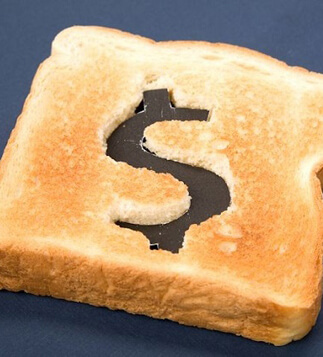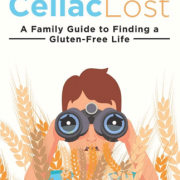Soaring Cost of Gluten-Free Ingredients Could Trigger Price Hikes and Reformulated Recipes
 Wholesale price of rice flour soars by 26%, prompting concerns over impact on ‘free from’ products.
Wholesale price of rice flour soars by 26%, prompting concerns over impact on ‘free from’ products.
- Zoe Wood, theguardian.com/business 1
The premium paid by shoppers for gluten-free versions of staple foods could increase in the coming months as the soaring cost of ingredients such as rice flour casts a shadow over the “free from” aisle in supermarkets.
These specialist foods already cost a lot more than mainstream products, making any price rise a source of concern, particularly for people who follow a gluten-free diet out of medical necessity. The scale of the problem means some firms could opt to rewrite recipes with cheaper ingredients.
Jason Bull, of the West Yorkshire-based ingredients firm Eurostar Commodities, said the wholesale price of rice flour, which is used to make gluten-free baked goods such as bread and cakes as well as baby food and desserts, was up 26%. Another factor was a 10% increase in freight costs.
“Rice flour is a key ingredient, so this causes a problem for manufacturers,” he said. “Can they afford to absorb such large increases without increasing the retail price or will it filter down to the consumer? It may result in recipes for products having to change if they cannot be absorbed, which will affect taste and quality potentially.”
The increase in the price of rice flour is down to problems in key rice-growing countries including Myanmar, where there has been a military coup, and India. Rice flour is usually made out of the broken grains that are a byproduct of milling. However, the squeeze means some suppliers are having to mill long-grain rice to produce it.
The cost of raw ingredients accounts for only part of the overall price paid for products in supermarkets, so high street price rises would not be of a similar magnitude. There is also a time lag while current supply contracts come to an end. After that, retailers may opt to pass on a price increase while also asking manufacturers to absorb some of the higher costs themselves.
The pressure comes at a time when demand for gluten-free foods is high. They have traditionally been consumed by people suffering from coeliac disease, an ailment in which the immune system reacts to gluten, a protein found in grains such as wheat and barley. However, the free-from customer base, which includes the dairy-free category, is much wider as food intolerances become more widely understood.
The market for gluten and dairy-free products was worth £1.1bn in 2020, according to the market researchers Mintel, with the former making up 40% of sales. The price of gluten-free products was a longstanding challenge, said Kiti Soininen, its category director, UK food and drink research.
“Prices are typically noticeably higher than for standard products,” she said, with the higher price tags reflecting the need for dedicated production lines and specialist ingredients. This meant some consumers were already priced out the market, with only 15% of people in households earning under £25,000 buying gluten-free products compared with 23% in homes with an annual income of £50,000 or more.
Two in five people who eat and buy free-from products said they cut back on them “when money is tight”, Soininen said, with any price rises potentially putting products out of more people’s reach.
The price pressure comes at a time of wider concern about higher shopping bills. The Food and Drink Federation has said food prices could rise by 5% by the autumn as worker shortages drive up pay and other costs.













